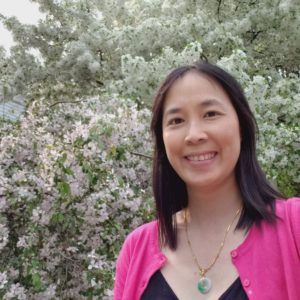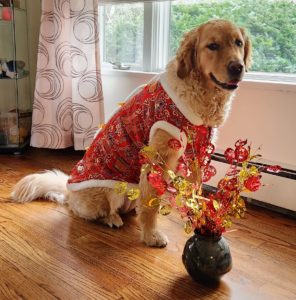Celebrating Asian American Heritage at NELSON
By: NELSON Worldwide
The 2023 theme for Asian American and Pacific Islander (AAPI) Heritage Month has been dubbed “Advancing Leaders Through Opportunity” by the Federal Asian Pacific American Council. Read more about a few of our own AAPI teammates as they share their stories around family, community, and their journey to NELSON. May is AAPI Heritage Month — and was because it marks two important events in Asian American history: the arrival of the first known Japanese immigrants in 1843 and the completion of the transcontinental railroad in 1869, which was built by Chinese immigrant workers. The AAPI umbrella term includes cultures from the entire Asian continent—including East, Southeast and South Asia—and the Pacific Islands of Melanesia, Micronesia and Polynesia.
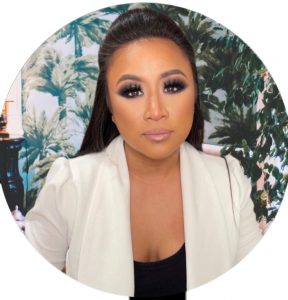
Carey Ann Ragusa
Senior Technical Designer
—
How did you find your way to NELSON?
I found my way to NELSON through a recommendation by my good friend Schyler Yu. We had previously worked at a different firm together and have been friends ever since. When a position was available at NELSON, he suggested that I apply and felt that I was ready to move in a different path and upgrade my professional career. It was one of the best decisions I’ve ever made and thanks to Sky I wouldn’t have considered the move or be where I am now. NELSON has become a good home for me and has been very welcoming. Becoming part of the New York Asset Strategy team has been such an incredible journey and I honestly enjoy working with our team and our clients. There is a special connection we all have in New York.
How do you identify within the Asian American and Pacific Islander community?
I identify within the Asian American and Pacific Islander community as a first generation out of three siblings. My parents migrated to the United States from the Philippines to create better lives for themselves. My parents both met here in Long Island, got married, had three daughters and the rest is history. We grew up to two different dialects (Tagalog and Visayan) in my house. My dad who is 50% Chinese and 50% Filipino came from the city life in Manila and my mom who is 100% Filipino came from the Aklan province and lived in Kalibo. We grew with immediate family and secondary family with lots of family friends. We always had them around.
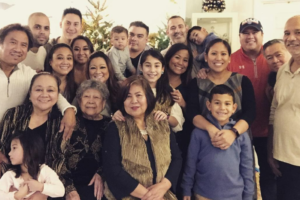
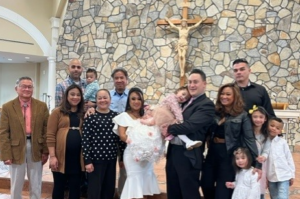
How has your heritage shaped the person you are today?
My heritage has shaped the person I am today through family values and morals I have retained from my upbringing at home. My parents, grandmother, and uncles all have shaped the way I think and have showed me what is important in life and culturally showed me the value of family, understanding the language when its spoken, working hard, and being grateful for what we have because there are many people that don’t get the same opportunity or items we have now.
In the Philippines, my parents had land to build on and requested that I design a building for them. The idea of designing a building in the Philippines helped me understand the culture, land surroundings, minor building codes that they barely have, the use of a ladder opposed to stairs and the scarce number of materials they use there. It was important for me to understand the process there and how it differed here in New York. This alone helped establish the person I am today culturally and made me realize what we have versus what we have there and how thankful and grateful we should be for even the little things and what we take for granted such as a roof over our head.
Does your family have any traditions that are especially important to you?
My family and I had very special traditions that we do and married to an Italian American I have incorporated that with our kids and life. Traditions are especially important to me. Although married to an Italian American, I’ve always looked to incorporate the traditions I was brought up with. Even when my husband was not my husband at that time, he embraced the Filipino culture and respectfully followed and learned our traditions. For special occasions in the Philippines men wear a barong and it is a clear see through flowery white/beige short or long sleeve button down. My dad had a special one made for my husband when he “went back home” so he can wear it along with all my uncles at weddings and other special occasions.
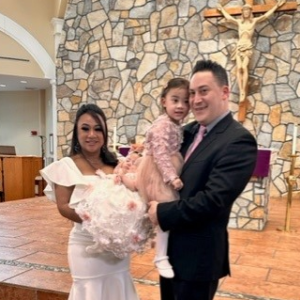
“Going back home” is a special term the Filipinos use when someone in the family is going back to the Philippines. That’s when the family purchases the special “balakbayan boxes (basically a 3’ wide x 5’ length x 2’ high shipping brown box) and we send chocolates, clothes, and various items in the United States that’s either not sold in the Philippines or too expensive to buy. In return they come back to the United States and always bring back items like handmade Ube or candies you don’t usually find in the United States.
Going back to traditions, most Filipinos are predominantly Catholic and my late grandmother would always have a special alter in the house dedicated to the Virgin Mary and have us pray the rosary along with her and would always ensure as a family we go to church on Sundays and we pray the rosary with her the rest of the week.
I got married in Disney and in the church, it was extremely important to me to follow a special wedding Filipino tradition of primary sponsors and secondary sponsors. The sponsors are all made up of special couples or single people in your life that has provided some kind of impact to your life who you respect and admire and look to being guided as the marriage grows. In addition there are four sets of secondary sponsors including Coin Sponsors, Veil Sponsors, Cord Sponsors and Candle. The secondary sponsors are more involved in presenting each item to the bride and groom. Each item is symbolic.
Catholic Coin Ceremony | The Arras
Exactly 13 Arras, or coins, are carried in a pouch and brought to the altar by the coin sponsors. The coins are an emblem of their future children and before the church, the bride and groom promise their care and love.
Catholic Veil Ceremony
Through the Catholic veil ceremony, two individuals are bonded and recognized as one. The veil sponsors drape one side of a white veil over the bride’s head and the other side over the groom’s shoulder as a symbol of unity. This also represents a wish for good health and protection during their life as husband and wife.
Catholic Cord Ceremony
Similar to The Veil Ceremony, the Yugal or infinity shaped cord is incorporated as a representation of the couple’s bond and union. Their sponsors will place the Yugal on top of the veil as the couple receives their blessing.
Catholic Candle Ceremony | Unity Candle
This is the final ritual symbolizing the bonding of two individuals and in Filipino culture, two families. The two outer candles are a representation of their individual lives before the wedding day. The candles exemplify all that the bride and groom are from their past experiences and represent each individual family. Together, the bride and groom will light the unity candle, blow out the single candles, and figuratively extinguish their past.
There are so many different Filipino traditions that are important to me, I can be here for a while describing the traditions I value . But before I end on Filipino traditions I value, one more tradition that I feel is extremely important and lands on birthdays. For every birthday, the family makes sure one dish is at least noodles that represent long life. It’s extremely symbolic and no matter what type of food is eaten during the birthdays, some type of long noodles need to be presented as part of the meal.
Who are the role models or mentors that have influenced you or helped guide you?
I have a few role models I look up to. One of my role models has always been my mother. As my grandmother raised me since I was 6 months, my mother worked two jobs to help and support the family. She has always been the epitome of resilience and a hard worker. She always taught me to work hard, strive to do better, never give up and always take care and respect your elders. As a Filipino taking care of your elders is a sign of respect. They provide the wisdom for the family. As a mother of two babies, I look to be at least half of what my mother is to me to my babies. I look to give them a life they can enjoy and embrace the Filipino culture by reading tagalog books, having my parents teach them the language and enjoying the Filipino flavors in food.
Two other role models I have that seem fitting to mention is an old colleague and friend in the architecture industry. They both taught me different ways of how to approach scenarios at a job site, what to look for in a drawing set, professionalism in all aspects of the job, the gives and takes in the industry, the balance of life and work, business is business, showing empathy is a good characteristic and not to be apologetic over everything. I valued the advice I received from both. They both hold a special place because without them I honestly don’t believe my career would’ve flourished as much as it has thus far and I’m so extremely gratefully for what they have shared and excited to embrace for what has yet to come and I mean that personally and professionally.
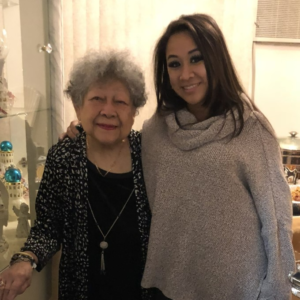
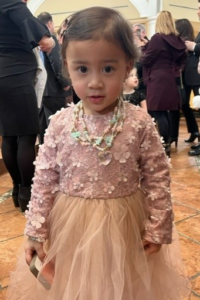
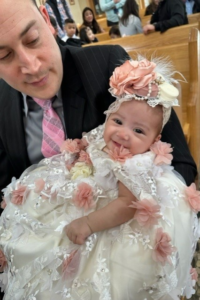
What brings you joy about your heritage and culture?
What brings me joy about my heritage and culture is the food. I enjoy the vast amount of food and dessert in the Filipino culture. We look forward to gatherings so we can have a taste of good cuisine aside from seeing all our relatives. Culturally we carry a lot of pork and fish in our dishes and even sometimes during bigger events we roast a pig on a stick. The Filipino food carries a variety of flavors. The secondary joy is spending time with my Tita’s and Tito’s and my cousins.
What does AAPI Heritage Month mean to you?
AAPI Heritage month means that it’s an opportunity for me to express the meaning of the Filipino culture and how the culture translates into my daily life. My culture impacts me daily especially when I come home. AAPI highlights the traditions people may not understand or be accustomed to and gives opportunity for different individuals to either try the food or think about visiting the Philippines. I will like to add since my mom is from The province Boracay is an incredible place to visit.
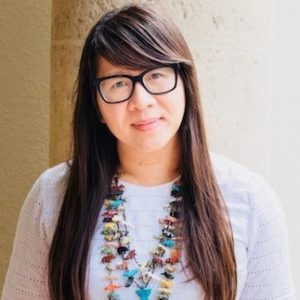
Keo Ballerstein
Design Leader
—
How did you find your way to NELSON?
I joined NELSON five years ago and was promoted to Design Leader | Director during my tenure. NELSON has been a great place for me to harness my creative energy to design places for people to connect.
I started my career in architecture & design, focusing on affordable housing and public projects. But over my 20 years in the industry, I gradually transitioned to Workplace. While each had their unique requirements, the underlining principle is to build communities where people can connect. I strongly believe that design can be socially impactful and bring us together.
How do you identify within the Asian American and Pacific Islander community?
I am an American of Lao descent.
I was born in Laos and raised in America. My parents immigrated the family to America following the Vietnam War. My earliest memories are from living in America. Sadly, I do not have any recollection of my birthplace. Navigating the different cultures at a very young age brought-on some challenges, but I never felt a need to replace one for the other. My heritage is an imperfect blend of American and Lao traditions and customs.
Who are the role models or mentors that have influenced you or helped guide you?
My parents are my role models.
My mother was a talented textile weaver of Lao silk who had other talents in traditional Lao arts and crafts. Most things she created and owned were purposeful, and her attention to detail and care for her craft have influenced how I approach design.
My father was an educator in Laos and one of the founders of the Lao America Association of Florida, serving as its first president. He was an eloquent communicator and leader, and I am inspired by the way he was able to warmly connect with so many people.
It has been about 10 years since their passing, and while their stories have yet to be told, they continue to influence the person I am today.
What brings you joy about your heritage and culture?
Great question. It brings me joy when I see friends or strangers of a different ethnicity respectfully embrace my culture. It is one of the reasons why I fell in love with my husband. To see him enjoy Lao food, his willingness to blend American customs with Lao customs, or to understand when he speaks Lao in his most American accent, that brings me joy.
What does AAPI Heritage Month mean to you?
Asian American and Pacific Islander Heritage Month recognizes the contributions and influences of the AAPI community in the United States. It can be daunting to think that the various AAPI ethnicities are all lumped into this one community, but I hope the month of May provides a platform for each AAPI ethnicity to share their unique stories. It is important that we dispel mainstream stereotypes of the AAPI community, and for the community to continue their contribution to American history.
Chelsea Cheng
Senior Project Manager
—
How did you find your way to NELSON?
I came to NELSON after I had my second maternity leave. I was hired by one of my managers at my very first job. I left NELSON after five years and returned after another five. I just celebrated my 3rd year return anniversary.
How do you identify within the Asian American and Pacific Islander community?
I was born and raised in Hong Kong. While waiting for our immigration application to be approved, I came to study at a boarding school in Vermont when I was 15. My family then moved to Bayside, New York the following year and I have been in New York ever since.
How has your heritage shaped the person you are today?
Having a different heritage allows me to keep my mind open. It comes natural to me to acknowledge things from different cultures, from different angles and allow myself to really try to understand, “see” and appreciate new and unfamiliar things.
Does your family have any traditions that are especially important to you?
My family has been in the U.S. for over 30 years now. We still celebrate Chinese New Year and most Chinese holidays including Mid-Autumn Festival. During Chinese New Year, we will dress in red or in traditional influenced clothing made with traditional fabric and patterns. Here is Poncho, our three-year-old Golden Retriever, dressed in doggy clothes made with traditional Chinese fabric. We also display decorations in red/gold.
Who are the role models or mentors that have influenced you or helped guide you?
My first project manager. As a new college graduate, he let me attend meetings and go to job sites by myself. It allowed me to make and learn from my mistakes; but most importantly it allowed me to gain experience and confidence. I was not only in a production role; I was being shaped to be a project manager since day one. I was given the chance to prove myself and I wish to do the same to all junior staff members.
What brings you joy about your heritage and culture?
When people ask questions and try to understand and show interest of where I came from and how different Hong Kong is from China or the rest of the Asian countries. How different each of our dialect is, etc.
What does AAPI Heritage Month mean to you
Every day is Heritage Day for me. Having a specific month honoring our heritage just a bigger reminder to appreciate where we come from, where our roots are, and where our fundamental beliefs begin.
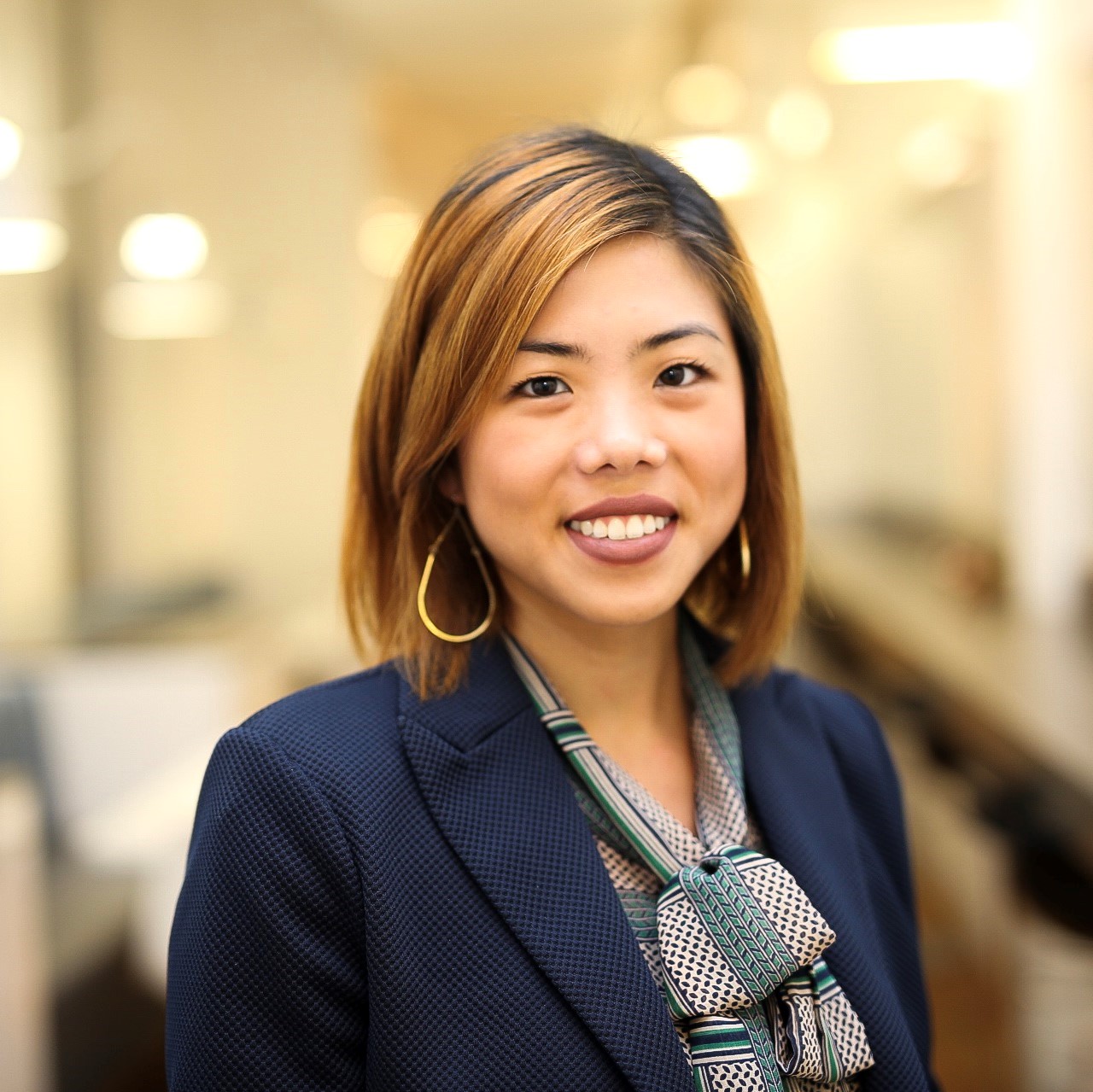
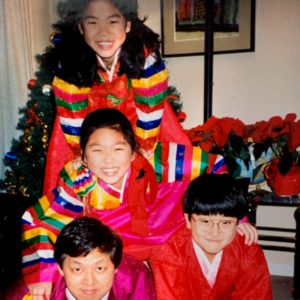
Monica Jun
Senior Project Manager
—
How did you find your way to NELSON?
I moved from my hometown, Chicago, nine years ago to NYC and The Mufson Partnership through a recruiter. They were merged with NELSON shortly after.
How do you identify within the Asian American and Pacific Islander community?
I identify as Korean-American. When people ask me where I’m from, I tell them I’m from Chicago (wait for pause) and my parents immigrated from Seoul, South Korea. It’s important to me that I provide context because although AAPIs may have similarities in our stories, they still have unique characteristics that are more identifiable within each subset. Being specific about my background usually sparks better conversation.
How has your heritage shaped the person you are today?
It is interwoven into every aspect of my life whether it’s accepted, rejected, or remixed as my own. There are aspects of Korean culture that I don’t integrate, and even that is an intentional reaction to the culture. Whenever I go to Seoul, I go on a mini shopping spree because my body shape is a better fit with theirs. Something as simple as finding clothes that fit me is 100 times easier to do in South Korea. However, when I was younger, the fashion sense for girls/women was much more modest and feminine there than what I was drawn towards given my American 90s culture of baggy jeans, baby tees, and starter jackets. I intentionally rejected these “girly” sensibilities because it did not align with my feminist ideals. It shaped my personality at a formative age to be the opposite of what I saw; bold (not meek), loud (not demure), strong (not sensitive). Those qualities are (and were) incorrect stereotypes, but I had not yet understood the layers of cultural nuance and history to be able to appreciate it like I can today. It took me until my thirties to start to wear pink without any guilt.
Does your family have any traditions that are especially important to you?
FOOD! My culture revolves around food. Eating is a communal and social engagement. Parents who grow up in a war-torn country don’t always express affection outwardly in the way I was used to seeing it in TV and movies growing up. But when my mom would make traditional meals to commemorate certain milestones, it was her way of expressing her love. Traditional Korean food can take a long time to make (lots of side dishes requiring pickling, marinading, hard to find ingredients). There is an expression “Let’s eat until we die” that is used jokingly when you are with loved ones and so happy to be eating good food together.
I also love celebrating New Years. My family did our Korean traditions on January 1, instead of Lunar New Year as our own blend. It’s time where we eat traditional food, play traditional games, dress up in our hanboks (see photo), and honor our parents. I loved it as a kid (because you get $$$) but the rituals around it always grounded us in our Korean heritage.
Who are the role models or mentors that have influenced you or helped guide you?
My mom is my primary role model. She sacrificed a lot for the wellbeing of my family and does it so willingly. She’s taught me what’s truly important in life and to reject a situation that goes against my fundamental core values. She can also connect with any stranger on the street. Her effortless ability to make meaningful human connections has always been an inspiration.
Professionally, Joe Schirripa is my mentor 😊. Joe has helped me navigate how to get my voice to be heard and perceived in intentional ways. It’s one thing to voice an opinion, but another to persuade others. I find this invaluable especially when I’m the minority at the table. He’s also insisted that I have a seat at the table. By empowering me, I know how to better empower others.
What brings you joy about your heritage and culture?
It’s encouraging to see the global community embrace South Korean pop culture and food. There are aspects of K-pop and Korean TV dramas I never thought Americans would embrace so I get a kick out of seeing so many teenagers knowing their lyrics without fully understanding what they’re saying but loving the vibe.
What does AAPI Heritage Month mean to you?
It’s a time to learn more about the different cultures under the giant umbrella that is AAPI. A time to celebrate the various cultures. Although it is such a behemoth, I appreciate the efforts being made to make it as inclusive as possible.
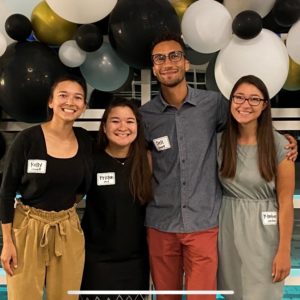
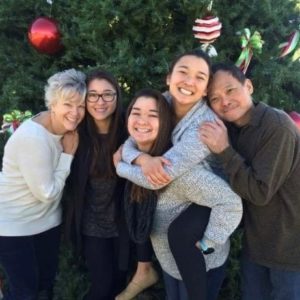
Kimberly Moy
Recruiter
—
How did you find your way to NELSON?
I met Maria in my first interview! She was awesome and I thought if I could work with someone so happy and good at their job, that seemed like a good place to be.
How do you identify within the Asian American and Pacific Islander community?
My father is Chinese, his parents immigrated to America shortly before he was born. They were really proud to be in America, worked for many years in a manufacturing facility, assimilated to the community as best they could, my grandma taught herself English, and they raised my dad and his siblings very “Americanized” so to speak. They lived near Chinatown in Chicago for several years and kept many Chinese and traditions and superstitions. My grandma passed many of those onto me and my sisters.
How has your heritage shaped the person you are today?
It gives me another perspective. Seeing the hard work my grandparents put in to give my dad and his siblings the best life possible has shaped my values and how I see others. My mother’s heritage is Polish/German, so growing up in a mixed family and seeing/living the different cultures has changed how I see myself and how I relate to others.
Does your family have any traditions that are especially important to you?
Hong Baos (this is a joke 😊)! It’s a little red envelope with money inside. Traditionally given by grandparents or elders at times of celebration for good luck and good fortune…but who doesn’t like the tradition of receiving money from our grandparents? In more seriousness, any holiday and birthday are always important and fun to celebrate.
Who are the role models or mentors that have influenced you or helped guide you?
My whole family, but especially my parents. This has become more and more true as I grow older and realize all that they have done and overcome.
What brings you joy about your heritage and culture?
The emphasis on being together and getting to know my grandparents and aunts and uncles has always been a joy. Like it is with all cultures, celebrating holidays and partaking in traditions is particularly joyful.
What does AAPI Heritage Month mean to you?
It is a way to embrace diversity and a reminder to reflect on our heritage and what shapes us into who we are.
